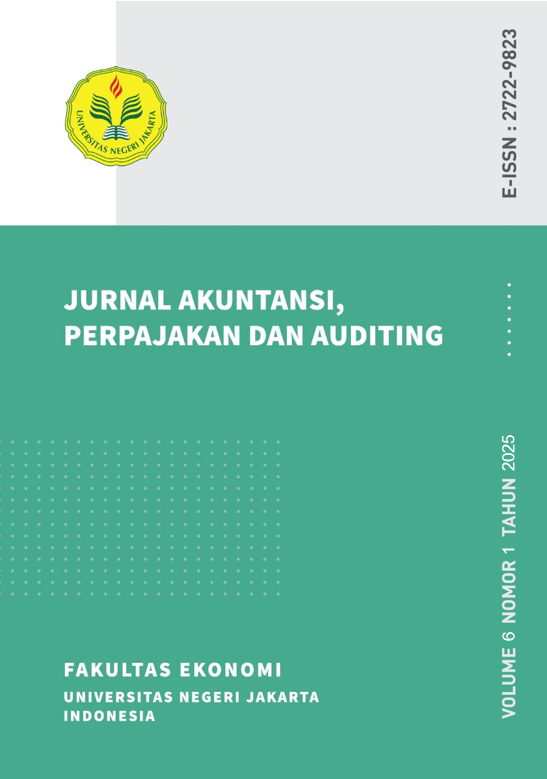Analisis Pengendalian Internal dalam Perencanaan Aset Barang Milik Negara oleh Kantor Pusat DJBC
DOI:
https://doi.org/10.21009/japa.0601.12Keywords:
Components of The Government's Internal Control System, Asset Needs Planning, State-Owned Assets, Asset ManagementAbstract
This study aims to analyze internal control in planning the inventory needs of State Property (BMN) assets in 2024 based on the Government Internal Control Standards (SPIP). In addition, this study provides recommendations for a pocketbook on internal control in planning the needs of BMN inventory assets to overcome gaps in internal control over planning the needs of BMN inventory assets. This study uses the Head Office of the Directorate General of Customs and Excise (DJBC) as the research object. This type of research is qualitative with a descriptive analysis approach. The data sources used come from primary data and secondary data. Primary data is in the form of interviews while secondary data is in the form of documentation on planning the needs of BMN inventory assets. The results of this study indicate that internal control in planning the needs of BMN inventory assets has been running by the technical instructions for planning the needs of BMN inventory assets, but there are still several internal control principles that are not under the principles of SPIP.
References
Biswan, A. T., & Grafitanti, I. D. (2020). Memaknai Kembali Pengangaran Bebasis Kinerja Berdasarkan Studi Impementasi Penganggaran Sektor Publik.
COSO. (2013).
Dewata, P. R., & Zulkarnaen, R. M. (2024). Analisis Proses Bisnis Manajemen Barang Milik Negara pada Kantor Wilayah DJKN Jawa Barat menggunakan “COSO Enterprise Risk Management (ERM) Framework.” Jurnal Ekonomi, Manajemen Dan Akuntansi. http://jurnal.kolibi.org/index.php/neraca
Direktorat Jenderal Kekayaan Negara. 2018. "Pengalaman Melakukan Pengosongan Rumah Negara." Kementerian Keuangan Republik Indonesia. November 6, 2018. https://www.djkn.kemenkeu.go.id/artikel/baca/15874/Pengalaman-Melakukan-Pengosongan-Rumah-Negara.html.
Indriani, R., & Siswantoro, D. (2023). Evaluasi Penerapan Sistem Pengendalian Intern Pemerintah (SPIP) pada Satuan Kerja X. Owner, 7(4), 3006–3017. https://doi.org/10.33395/owner.v7i4.1656
Novika. (2021). Analisis Penerapan Sistem Pengendalian Intern atas Pengelolaan Barang Milik Negara pada Kantor Wilayah Kementerian Hukum dan HAM Provinsi Bangka Belitung Novika. Jurnal IAKP, 2(1).
Ompusungggu, S. G., & Salomo, R. V. (2020). Analisis Pelaksanaan Sistem Pengendalian Intern Pemerintah di Indonesia. In Jurnal Ilmu Pemerintahan (Vol. 12, Issue 2).
Purwohedi, U. (2022). Metode Penelitian Prinsip dan Praktik. Raih Asa Sukses (Penebar Swadaya Group).
Sugiyono. (2022). Metode Penelitian Kualitatif.
Suherlan, D. D., & Citra Mulyandani, V. (2022). Pengaruh Implementasi Sistem Pengendalian Internal Pemerintah (SPIP) Terhadap Pengamanan Aset Tetap (Studi Kasus Pada Pemerintah Kabupaten Bekasi) The Effects of Government Internal Control System (SPIP) Implementation on Fixed Asset Safekeeping (Case Study in Bekasi Regency Government). Indonesian Accounting Research Journal, 2(3), 258–264.
Wahyuni, S., & Rifki Khoirudin, M. (2020). Pengantar Manajemen Aset.
Wiragustini, R. wiragustini. (2022). Tinjauan Atas Perencanaan Kebutuhan Barang Milik Negara Pada Kantor Pelayanan Pajak Pratama Kudus Tahun 2021.






